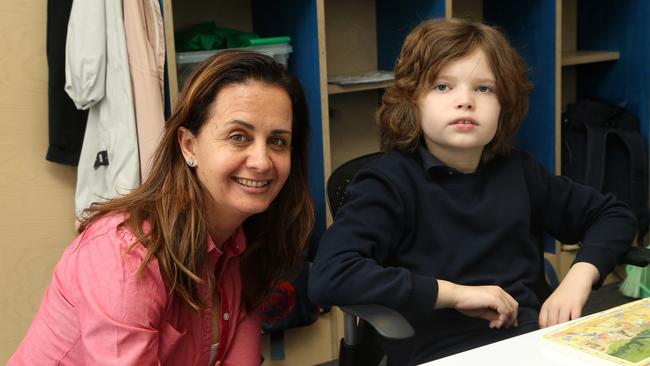New figures reveal Boroondara’s class sizes some of the smallest in Melbourne’s inner east
New figures reveal some of our most heavily populated and under resourced schools in Melbourne’s inner east. How do Boroondara’s schools rate?

Schools Hub
Don't miss out on the headlines from Schools Hub. Followed categories will be added to My News.
Boroondara’s schools have some of the smallest class sizes in Melbourne’s inner east according to figures by the Australian Curriculum, Assessment and Reporting Authority.
The data, which is the most up to date and includes all state and private schools, revealed the most crowded and best resourced classrooms and highlighted the schools where teachers had the most students to teach.
The figures show in 2018 in the inner eastern Melbourne region there were more students per teacher at Armadale Primary School than any other school.
It showed Armadale Primary School had 18.7 students for every teacher.
The second highest student-teacher ratios were at Malvern Primary School where there was an average of 17.5 students for every teacher at the school.
At SEDA College (Victoria) there were 17.3 students for every teacher, the Inner Eastern Melbourne region’s third highest.
In contrast there was one teacher for every 2.4 students at Giant Steps Melbourne in Kew, the region’s lowest ratio of students per teacher.
The second lowest ratio was at Belmore School in Balwyn where there were 3.3 students per teacher.
St Paul’s College Kew had 4.1 students per teacher, the third lowest ratio in the Inner Eastern Melbourne region.
Giant Steps principal Trish Karedis said the school opened in 2016 and catered to children and adolescents with autism.
It currently counted 22 youngsters among its cohort, she said, but student numbers were expected to grow gradually in coming years.
INSTRUCTING DRIVER ALLEGEDLY FAILS DRUGS TEST
Class sizes at the school typically ranged between five to eight students for every teacher, she said, and they were assisted by up to two specially trained aides.
Small class sizes helped staff cater to the individual needs of each student, she said, and their curriculum included occupational therapy, speech therapy and music therapy.
According to ACARA the national student-teacher ratio was 13.5 students for every teacher.
Across the country independent private schools had the lowest student to teacher ratios with 11.7 students to every teacher.
Government schools had an average of 13.8 students for every teacher while Catholic schools had an average of 14 students for every teacher.
Student-teacher ratios do not take into account teacher aides or non-teaching staff at schools, only the full-time equivalent teachers.
Inner Eastern Melbourne’s most crowded classrooms:
Armadale Primary School: 18.7 students per teacher
Malvern Primary School: 17.5 students per teacher
SEDA College (Victoria): 17.3 students per teacher
Greythorn Primary School: 17.1 students per teacher
Kew Primary School: 17.0 students per teacher
Camberwell Primary School: 17.0 students per teacher
Deepdene Primary School: 16.9 students per teacher
St Joseph’s School: 16.8 students per teacher
Boroondara Park Primary School: 16.8 students per teacher
Auburn South Primary School: 16.8 students per teacher
Inner Eastern Melbourne’s least crowded classrooms
Giant Steps Melbourne: 2.4 students per teacher
Belmore School: 3.3 students per teacher
St Paul’s College Kew: 4.1 students per teacher
Alia College: 4.8 students per teacher
Rossbourne School: 5.5 students per teacher
Kamaruka: 6.2 students per teacher
Andale School: 6.2 students per teacher
The Currajong School: 6.9 students per teacher
Christ Church Grammar School: 7.2 students per teacher
Preshil, The Margaret Lyttle Memorial School: 7.4 students per teacher


